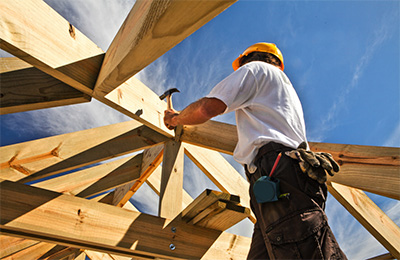Mapping the urban heat island

The impacts of extreme heat are not experienced equally. Individuals who live in historically disinvested neighborhoods and those with additional health concerns are at greater risk during periods of extreme heat.
To better understand the uneven distribution of heat and related impacts, more than 200 volunteer community scientists collected data in Hennepin and Ramsey counties in July 2024 as part of NOAA’s 2024 Urban Heat Island Mapping Campaign.
About the study
Using heat sensors mounted on their cars, volunteers traversed designated routes in the morning, afternoon, and evening on one of the hottest days of the year. The sensors recorded data every second measuring temperature, humidity, time, and location.
Volunteers included residents and partners. Partners for this study included the Metropolitan Council, City of Minneapolis, City of St. Paul, University of Minnesota, Minnesota Climate Adaptation Partnership, Minnesota Science Museum and Great River Greening.
Results and key observations
The data collected by volunteers was analyzed by a team at CAPA to create detailed maps of the distribution of air temperature and humidity across much of Hennepin and Ramsey counties.
See the urban heat mapping summary report (PDF, 10 MB), explore an interactive map of the data, and download the temperature, heat index, and traverse points data from the Hennepin County GIS data site.
Learn more about how the study worked and how Hennepin County will use the data and key observations:
Key observations from the data include:
- Highly developed urban areas, such as downtown Minneapolis and downtown St. Paul, have higher temperatures than other areas through the day and evening.
- Areas with sparse development but industrial land use, such as airports, seem to create a pocket of higher temperatures near residential areas.
- Street trees, greenspace, and water help to alleviate heat in residential areas. For example, neighborhoods near Lake Harriet in Minneapolis and Vadnais Lake in Vadnais Heights are cooler than areas without shade, greenspace, or water.
Please contact urbanheat@hennepin.us to request copies of the raw data for further research or analysis.
How will Hennepin County use the data?
Hennepin County will use the data and maps from this study to identify specific areas for extreme heat planning. The study data will be compared with infrastructure and social vulnerability data to identify high priority areas for extreme heat mitigation and response planning.
The urban heat island maps will inform our extreme heat strategies, which include:
- Continuously monitoring key temperature and humidity measures at the city level.
- Working closely with the National Weather Service to provide forecasting, alerts and warnings.
- Developing detailed urban heat island mapping to focus efforts in the most impacted areas.
- Providing public education, especially those most susceptible or exposed to heat.
- Creating more access to air-conditioned spaces.
- Planting trees along streets to increase shade, especially in areas with lower tree canopy.
- Adding vegetation to urban spaces, including with green roofs and urban agriculture.
- Implementing cool surfaces on roofs and walls.
- Reducing paved area or using permeable or cool pavements.
The county is exploring ways to continue to update and monitor temperatures going forward as our climate and built environment change.
What is an urban heat island?
Urban heat islands are areas that get much hotter than surrounding areas, particularly during the summer. These areas have more roads, buildings, and other surfaces that absorb and radiate heat. They also have fewer trees and greenspace that help keep areas cooler.
The combination of these characteristics creates “islands” where the temperature measured can be significantly higher than the temperatures of surrounding areas. The continued rise of temperatures due to climate change and continued growth of urban areas will likely make the urban heat island effect worse.
Learn more about the urban heat island effect and impacts from study volunteers
Additional urban heat island maps
The Metropolitan Council has urban heat island maps from 2016 and 2022. These maps show land surface temperatures measured by satellites, which can be the temperature of the ground, the tops of buildings, or the tree canopy.
This urban heat island study conducted by Hennepin and Ramsey counties measured air temperature and humidity, which can be different than land surface temperature and is more relevant to the impact of heat on human health.
Comparing the patterns between the Metropolitan Council maps and the map from the urban heat study will deepen our understanding of extreme heat in the region.
Additional information and resources
News coverage
- Minnesota drivers help map out the hottest neighborhoods across the United States from KSTP Eyewitness News
- Researchers zero in on areas hardest hit by heat island effect from the Sahan Journal
- In the Twin Cities, mapping the warming urban heat island to prepare for an even hotter future from MPR News
Resources
- Urban heat islands flyer (PDF)
- Staying cool in the summer while saving energy
- Cooling options in Hennepin County
- Improving home energy efficiency (Minnesota Department of Commerce)
- Weatherization assistance program (Minnesota Department of Commerce)

